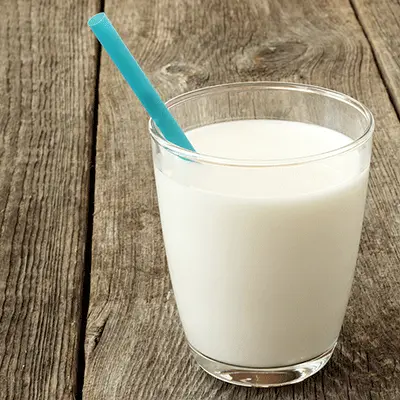6 Skeleton Superstitions, Smashed
Learn the facts from the myths when it comes to keeping your skeleton strong.
1. Fact or myth? We don’t need calcium for our bones.
This is a myth. We do! Bones are a living tissue and need nutrients daily, including calcium and vitamin D, to help them stay healthy. In fact, calcium is a major building block of our skeleton.
2. Fact or myth? Only children need calcium.
Myth. Whether one or 100, we all need calcium. Children need even more as they approach age nine, because bone size and strength increases significantly during this time frame, when up to 50 percent of peak bone mass is built. Adults’ bones also need daily nourishment as well as physical activity to help reduce bone mass loss and maintain them for longevity.
3. Fact or myth? Protein is not good for bones.
Myth. Some people have been scared by the unsupported claim that eating protein may cause increased calcium loss. As long as you are eating the recommended calcium and protein for your age range, the protein you eat will help, not harm your bones.
4. Fact or myth? Milk and milk products are not beneficial for my bones.
Myth. Milk, yogurt and cheese offer important nutrients critical to bone health. Milk is the No. 1 food source of both calcium and vitamin D in the U.S. diet, and also contains high-quality protein, phosphorus and potassium. While there are other ways to get calcium besides dairy, it can be more difficult to meet daily recommendations without dairy foods.
5. Fact or myth? People in other countries don’t eat many dairy foods, and they don’t have osteoporosis.
Myth. While hip-to-hip comparisons tend to show that Asians with low dairy intakes have a lower hip fracture rate than Caucasians, they do have as high of a spine or vertebral fracture rate. This means that they are at risk for osteoporosis, just in a different way.
6. Fact or myth? Osteoporosis is a disease only the elderly experience.
Myth. While osteoporosis occurs in older age, it is at least partially a result of what is done (or not done) during those peak bone building years before the age of 30. Osteoporosis weakens bones like termites weaken a house. Many things determine bone health including genetics (race, sex, family disposition) and lifestyle habits such as physical activity, body weight, smoking and alcohol use. Help support your skeleton by the behaviors you can control. If you are a parent, help make sure your kids establish good nutrition and physical activity habits early on.
So, treat your bones – after all they support you every day! Help support them back by eating a balanced diet that includes the recommended servings of milk and milk products for your age. This can help children and adolescents build maximum peak bone mass and adults maintain healthy bones.















